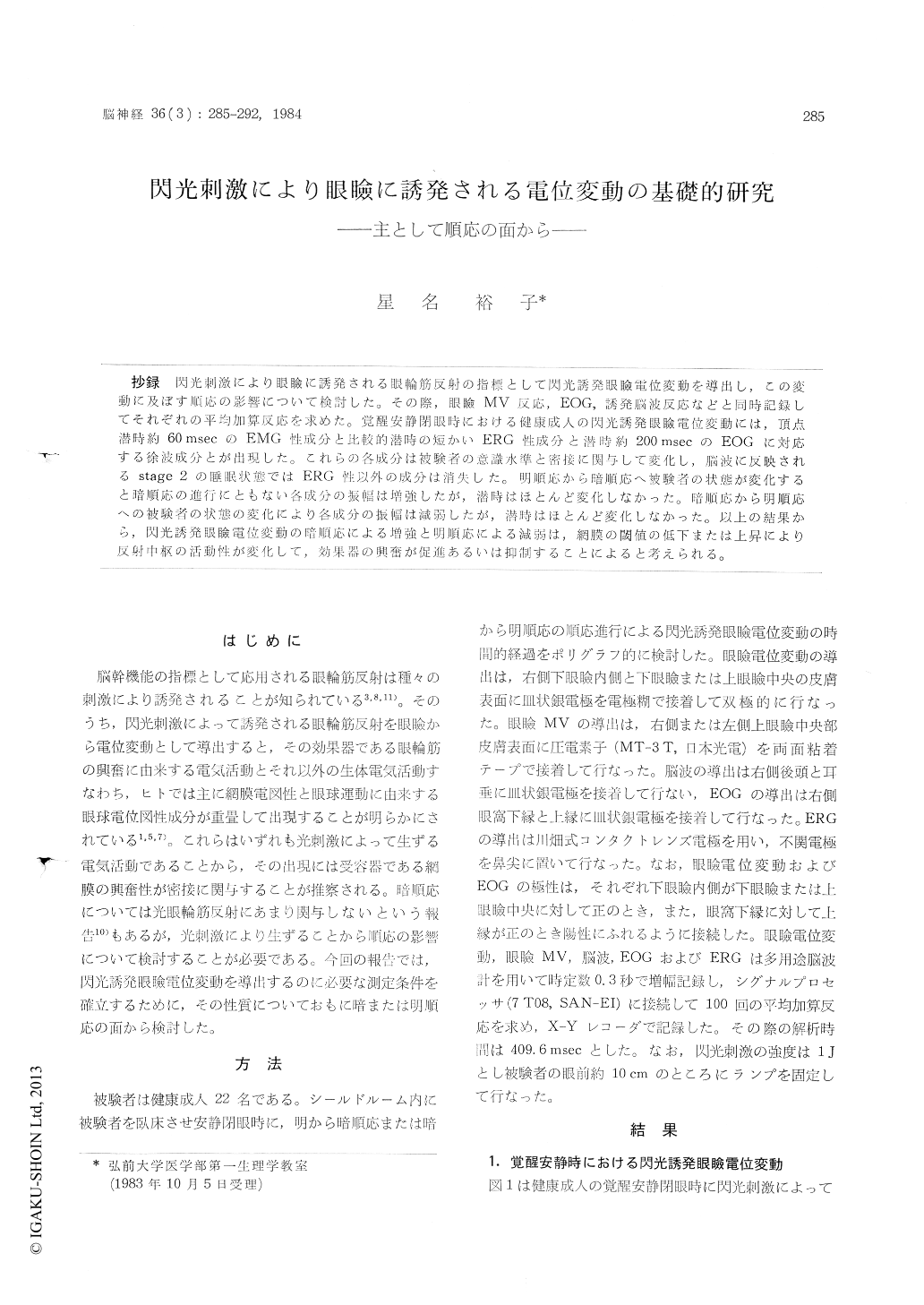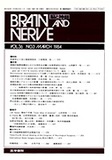Japanese
English
- 有料閲覧
- Abstract 文献概要
- 1ページ目 Look Inside
抄録 閃光刺激により眼瞼に誘発される眼輸筋反射の指標として閃光誘発眼瞼電位変動を導出し,この変動に及ぼす順応の影響について検討した。その際,眼瞼MV反応,EOG,誘発脳波反応などと同時記録してそれぞれの平均加算反応を求めた。覚醒安静閉眼時における健康成人の閃光誘発眼瞼電位変動には,頂点潜時約60msecのEMG性成分と比較的潜時の短かいERG性成分と潜時約200msecのEOGに対応する徐波成分とが出現した。これらの各成分は被験者の意識水準と密接に関与して変化し,脳波に反映されるstage 2の睡眠状態ではERG性以外の成分は消失した。明順応から暗順応へ被験者の状態が変化すると暗順応の進行にともない各成分の振幅は増強したが,潜時はほとんど変化しなかった。暗順応から明順応への被験者の状態の変化により各成分の振幅は減弱したが,潜時はほとんど変化しなかった。以上の結果から,閃光誘発眼瞼電位変動の暗順応による増強と明順応による減弱は,網膜の閾値の低下または上昇により反射中枢の活動性が変化して,効果器の興奮が促進あるいは抑制することによると考えられる。
In order to establish the most adequate method to lead the photically evoked lid potential chan-ges, their physiological properties were studied from standpoint of dark or light adaptation, which is known to be due to the increase or decrease in the sensitiveness of the retina that is the receptor of the orbicularis oculi reflex. The photically evo-ked lid potential changes were obtained with the summation technique by the signal processor (7 T 0 8, SAN-EI, Tokyo) in normal subjects. In addition, the average summated responses of the photically evoked lid MV responses, the ERG, EOG andEEG were also recorded simultaneously and dis-cussed polygraphically.
The results obtained were as follows:
1) The average evoked lid potential changes in healthy resting subjects with eyes closed were shown to be composed of early rapid component, initial slow component and late slow component, which corresponded to dominant rapid vibrations of the evoked lid MV responses, the a and b wa-ves of ERG and the EOG, respectively. The elect-romyographic and electrooculographic components were observed to have peak latency of about 60 msec and 200 msec, respectively.
2) The electromyographic and electrooculogra-phic components were found to change correspond-ing to the level of cortical activity indicated by the EEG patterns. They were gradually suppressed in amplitude according to the decrease of cortical activity and disappeared in stage 2 of natural sle-ep, although the electroretinographic components remained.
3) With the progress of dark adaptation after adapting from light to darkness, the electromyo-graphic and electrooculographic components in ad-dition to the electroretinographic component of the average lid potential changes were considerably increased in amplitude but hardly changed in peak latency.
4) With the progress of light adaptation, the electromyographic and electrooculographic compo-nents in addition to the electroretinographic com-ponent were somewhat decreased in amplitude, but hardly changed in peak latency.
5) From the above results, it was suggested that the augmentative or inhibitory changes of the ave-rage evoked lid potential changes in a dark or light environment may be caused by modifying the activities of brain stein reticular formation and then the orbicularis oculi through the increase or decrease in the sensitivity of the retina, that is the receptor of so-called retino-palpebral reflex.
6) Accordingly, it seems likely that the photic-ally evoked lid potential changes should be obtain-ed under fully dark-adapted condition, because the average evoked lid potential changes were sometimes decreased markedly in amplitude physio-logically or pathologically.

Copyright © 1984, Igaku-Shoin Ltd. All rights reserved.


